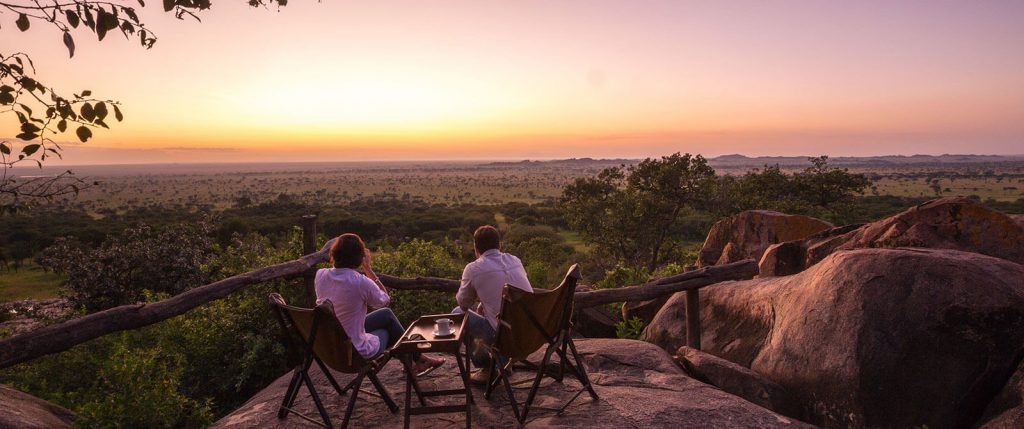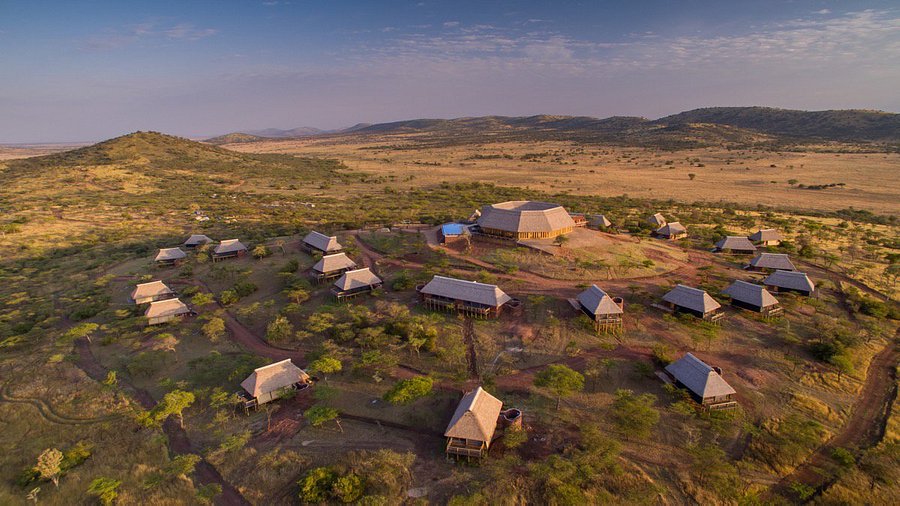Serengeti national park is undoubtedly the best- known wildlife sanctuary in the world, unequalled for its natural beauty and scientific value. Within its boundaries are more than 3 million large mammals living in total freedom on the “endless” plains (as Serengeti means in Maasai language) dotted with rock outcrops, patches of Acacia bush forest and seasonal small rivers.
About 35 species of plains animals can be observed here including the “big five” elephant, rhino, lion (more than 2000 of them), leopard and buffalo and huge herds of wildebeest, gazelle and zebra which in late
May or early June, depending on the weather, being their spectacular migration from the central Serengeti plains to the permanent water sources in the west and north of the park. Lines and columns of wildebeest up to 40 kms long have been observed.The main attraction of the Serengeti is the annual wildebeest migration. During the wet season between March and May, the wildebeest are scattered over the southern plains, but when the rains end, the animals form massive herds and move north by the thousands in search of fresh grass. At the end of August, they cross the Mara River into the Masaai Mara National Reserve in Kenya.
The river crossing is a mad rush, during which hundreds of animals are drowned, trampled or eaten by Crocodiles who calmly wait for there pray to arrive, perfectly timing for a whole season harvest. This is the wildest dramatic scenarios to be witnessed in ‘Siringet’ as it’s known to the Masaai. In November, they move to the south again in time to give birth at the start of the rainy season in the Siringet.
At the tail end of the procession, come the crippled and those too old to keep up. Lions, cheetah, hyenas and hunting dogs follow the migration, making sure that only the fittest survive, while vultures, circling overhead, wait patiently to scavenge.
Other common species found in the Serengeti include hippo, giraffe, eland impala, waterbuck, klipsringer, grant’s and Thomson’s gazelles, baboon, velvet and patas monkeys, warthog, topi, hyraxes, hartebeest, jackals and foxes and a rich selection of bird life. Nearly 500 species of birds have been recorded in the park, some of which are Eurasian migrants which are present in the park from October to April. Crocodiles can be observed in the rivers traversing the park.





